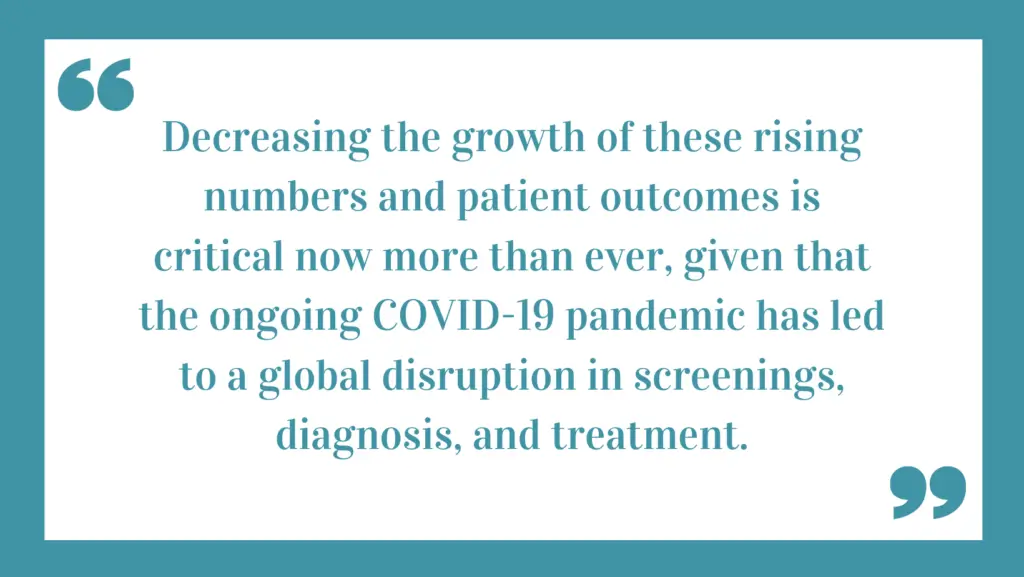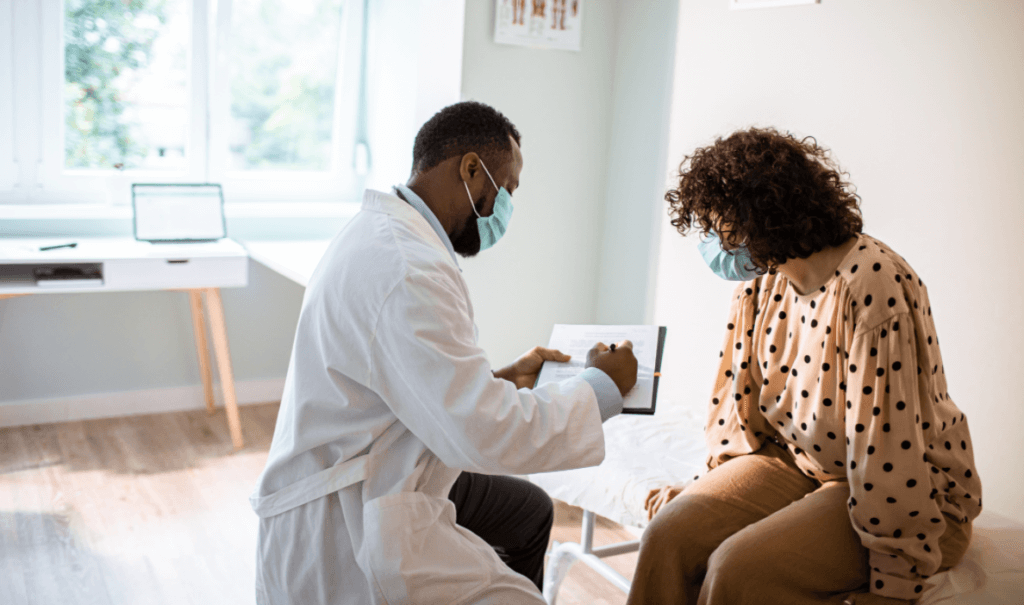February is National Cancer Prevention Awareness Month, but there are lifesaving reasons we should embrace preventive care year-round
Lauren Tully is an Atlanta-based freelance writer specializing in cancer research and non-profit organizations. She has over 15 years of experience interviewing patients, doctors, and celebrity ambassadors, ghostwriting, fundraising, and covering progress in cancer research and care. When she’s not writing, she enjoys spending time with loved ones and traveling whenever possible.
My father was 62 years old when he began having stomach pain in late April of 2020. He was a vegan, worked out daily, and kept up with his annual doctors’ visits and screening recommendations. However, when he began having stomach pains, we were still in the thick of the COVID-19 pandemic. He did a phone consult with the doctor, and since it didn’t seem like COVID, he decided to try and wait it out a bit before making an in-person appointment.
After a few weeks, the pain became excruciating and he made an in-person appointment with his doctor. At the time, we all thought it might bediverticulitis or gallstones. Unfortunately, an ultrasound and biopsy revealed a devastating late-stage stomach cancer diagnosis on June 8th, 2020. Sadly, he died 19 days later. While there is no guarantee my father’s outcome would have been different if he had gone to the doctor sooner, his illness highlights critical issues we currently face in the United States regarding cancer screening and prevention.
Data: Global Screening Disruptions
Today, cancer remains a global pandemic, with an estimated 23.6 million new cancer cases and 10 million deaths worldwide in 2019 alone, according to a 2021 report published in JAMA Oncology.. By comparison, there were fewer than 19 million new cases and 8.29 million cancer deaths worldwide in 2010. Decreasing the growth of these rising numbers and patient outcomes is critical now more than ever, given that the ongoing COVID-19 pandemic has led to a global disruption in screenings, diagnosis, and treatment.

Hope: Half of All Cancer Cases May Be Avoidable
A study from the American Cancer Society reported that more than approximately 40% of newly diagnosed cancer cases in the United States are potentially avoidable. This number includes the 19% of cancers caused by smoking and the 18% caused by excess body weight, alcohol consumption, poor nutrition, and physical in-activity. According to the American Association of Cancer Research, making healthy lifestyle changes such as maintaining a healthy weight, exercising regularly, practicing sun safety, getting recommended vaccines, and quitting smoking (or never starting in the first place) can dramatically reduce your risk of certain cancers.
A significant example of this is screening for colorectal cancer. When detected early, colorectal cancer has a 99% long-term survival rate. Yet, it is the second leading cause of cancer death in men and women combined in the United States. Due to progress in early detection and treatment, the death rate from colorectal cancer has declined for decades. However, in 2020 colonoscopies (the procedure that screens for gastro-intestinal cancers) dropped by nearly half compared to 2019. The same trend was seen in other major cancer screening procedures in 2020 for breast and prostate cancer, leading to an overall estimated screening deficit of 9.4 million in the United States associated with the COVID-19 pandemic. The number of chest CT scans and fecal blood tests that can often help detect cancer were also down. New cancer diagnoses also dropped an estimated 13 percent to 23 percent, not because there was less cancer globally, but because doctors’ visits and screenings were down, and less of it was being detected.
Care: Health Disparities & Equity
Unfortunately, many Americans cannot make these healthy lifestyle choices because of several factors, including their geographic location, income, physical and mental abilities, and lack of education. Accessibility, affordability, and trust in the medical community are critical for the health equity barrier to many in the United States. As a writer in the cancer research and non-profit sector for over a decade, I have spoken to many patients who chose not to get screened because they didn’t have health insurance, access to a good doctor, or the income to cover the cost.
Even before the pandemic, health equity and overall access to care and health education prevented many people from understanding the impact of healthy lifestyle choices, attending annual checkups, and undergoing recommended cancer screenings. For example, a federal study in 2018 claimed that only an estimated 8% of Americans were participating in all recommended services for early detection and prevention. What’s more, according to a study published in December of 2021 in the journal Cancer, screenings for several major cancer types had fallen even more significantly in 2020.
Action: Here’s How You Can Make an Impact Today
Education can be one of the most effective prevention and early screening tools. Talking to your loved ones and patients about the importance of having a primary care physician, knowing your family health history, making healthy lifestyle choices, and talking to your doctor about recommended screenings is an excellent place to start.
Cancer prevention is not just about being an advocate for patients. It starts with you. Become an advocate for yourself and an example to your loved ones and patients by following guidelines, attending annual checkups, and scheduling recommended screenings. Not sure when to get screened? Knowing your family and medical history and talking to your doctor about any symptoms you may be experiencing will help your primary care physician recommend what’s best for you. In the meantime, here is a rundown of to the most current screening guidelines for people at average risk for certain cancers from the American Cancer Society.
No matter what organization you choose to get involved in, supporting research means more discoveries, more time with loved ones, and real hope of a future where every person diagnosed with cancer becomes a long-term survivor. It’s one type of cancer prevention that has the potential to make a tremendous impact on our future.
In my father’s case, routine screening for stomach cancer wouldn’t have been an option because it is still considered a relatively uncommon cancer type in the United States. However, the disease rarely causes symptoms in its earliest and most treatable stages, so many stomach cancers typically aren’t found until the tumor is relatively large or has spread outside the stomach.
Unfortunately, there are many cancer types, like stomach cancer, where early screening and effective treatments are desperately needed. Continued cancer research is one way this kind of lifesaving progress is possible.
Organizations like Stand Up To Cancer (SU2C), are leading the way, funding collaborative cancer research focused on saving patient lives now. SU2C-funded research focuses on the most promising advancements in cancer treatments with diverse research models representing a union of science, technology, and medicine. As of September 2021, SU2C research had contributed to nine FDA approvals for new cancer therapies and 258 clinical trials treatment more than 19,000 patients since its inception in 2008.
With 100% of public donations received supporting SU2C and its collaborative cancer research programs, more than 2,000 scientists representing 210 institutions have participated in SU2C-funded research projects. The organization is also committed to improving cancer care in medically underserved communities through its Health Equity Initiative.

